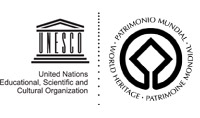
| World Heritage Site Inches Forward: Two More First Nations Submit Lands Plans | 6 July 12 |
 One of the world's last remaining areas of intact southern boreal forest is a step closer to becoming a United Nations Educational, Scientific and Cultural Organization (UNESCO) World Heritage Site.
One of the world's last remaining areas of intact southern boreal forest is a step closer to becoming a United Nations Educational, Scientific and Cultural Organization (UNESCO) World Heritage Site.Little Grand Rapids and Pauingassi, two Manitoba First Nations, submitted land-management plans to the Provincial government June 2012. Both are among the five First Nations who initiated the World Heritage Site undertaking in 2002. The lands plans have been officially submitted to the province for approval and will be finalized following a period of public review. The public has until August 8, 2012 to submit comments on the two proposed lands plans. Polar River First Nation and Bloodvein First Nation have also submitted land management plans. Poplar River's plan was submitted September 2005 and approved June 2011, and Bloodvein plan was approved January 2012. Five First Nations started the designation bid in 2002 and will manage the lands with the Governments of Ontario and Manitoba. Manitoba and Ontario nominated 33,400 square kilometres of boreal forest, rivers, lakes and wetlands spread across eastern Manitoba and into Ontario as a UNESCO World Heritage Site candidate January 18, 2012. The nominated area includes the already established Atikaki Provincial Park in Manitoba and Woodland Caribou Provincial Park in Ontario. View June 21, 2012 Government of Manitoba press releaseView June 21, 2012 Winnipeg Free Press coverage View Little Grand Rapids and Pauingassi Traditional Use Planning Area Proposals View UNESCO website View Manitoba Wildlands Manitoba World Heritage Site page View Manitoba Wildlands Protected Areas/Parks Reviews page View more information on Manitoba Wildlands Protected Areas Announcements page Sources:
Government of Manitoba, Little Grand Rapids, Pauingassi
|
|
 Print version Print version |
Top |
